
漢德百科全書 | 汉德百科全书
 International cities
International cities


Assisi ist eine Stadt mit 28.379 Einwohnern (Stand 31. Dezember 2016) im mittelitalienischen Umbrien in der Nähe der Regionalhauptstadt Perugia. Sie ist Geburtsort des Hl. Franz von Assisi (auch Hl. Franziskus), des Gründers der Minderen Brüder (heute: Franziskaner oder Minoriten) und der Hl. Klara, der Gründerin des Klarissenordens.
Das mittelalterliche Stadtbild mit Stadtmauer und Festungsruine Rocca Maggiore ist noch gut erhalten und wurde im Jahr 2000 zum Weltkulturerbe der UNESCO ernannt.
阿西西 (意大利语:Assisi,天主教中文译作“亚西西”)是意大利翁布里亚大区佩鲁贾省的一个城市,位于苏巴修山的西侧。
阿西西是亚西西的方济各的诞生地,他于1208年在此创立方济各会;也是亚西西的圣嘉勒的出生地,她创立了贫穷修女会。19世纪的痛苦圣母加俾额尔也出生在这里。
2000年,亚西西的圣方济各圣殿和其他方济各会建筑被列为世界遗产。
1986年以来,世界宗教领导人会议不定期举行。
Assisi (Italian pronunciation: [asˈsiːzi], from the Latin: Asisium) is a town and comune of Italy in the Province of Perugia in the Umbria region, on the western flank of Monte Subasio.
It is generally regarded as the birthplace of the Latin poet Propertius, born around 50–45 BC. It is the birthplace of St. Francis, who founded the Franciscan religious order in the town in 1208, and St. Clare (Chiara d'Offreducci), the founder of the Poor Sisters, which later became the Order of Poor Clares after her death. The 19th-century Saint Gabriel of Our Lady of Sorrows was also born in Assisi.
Assise (en italien Assisi) est une ville italienne d'environ 28 100 habitants, située dans la province de Pérouse (Perugia) en Ombrie (Umbria).
Assise est surtout célèbre pour son apogée médiéval et pour être le lieu de naissance et de mort de Francesco Bernardone, plus connu sous le nom de François d'Assise, un des plus grands saints de l'Église catholique romaine. Pour son patrimoine exceptionnel, la ville est classée sur la liste du patrimoine mondial de l'Unesco.
Assise a été le siège de plusieurs rencontres interreligieuses, connues sous le nom de rencontres d'Assise, en 1986, 1993, 2002, et 2011.
Asís (en latín: Asisium, en italiano: Assisi) es una ciudad y comune en la provincia de Perugia región de Umbría, en Italia.
Según el censo de 2007, la municipalidad contaba con 26.000 habitantes en un término municipal de 187 km². La ciudad en sí cuenta con una población de cerca de 5.500 personas. Tras las elecciones de 2006, el ayuntamiento está regido por Claudio Ricci (PdL).
Sede episcopal relevante, es además la ciudad donde nacieron san Francisco de Asís, fundador en 1208 de la orden Franciscana o "franciscanos", y santa Clara de Asís (Chiara d’Offreducci), fundadora de la Orden de las hermanas pobres de Santa Clara o "clarisas".
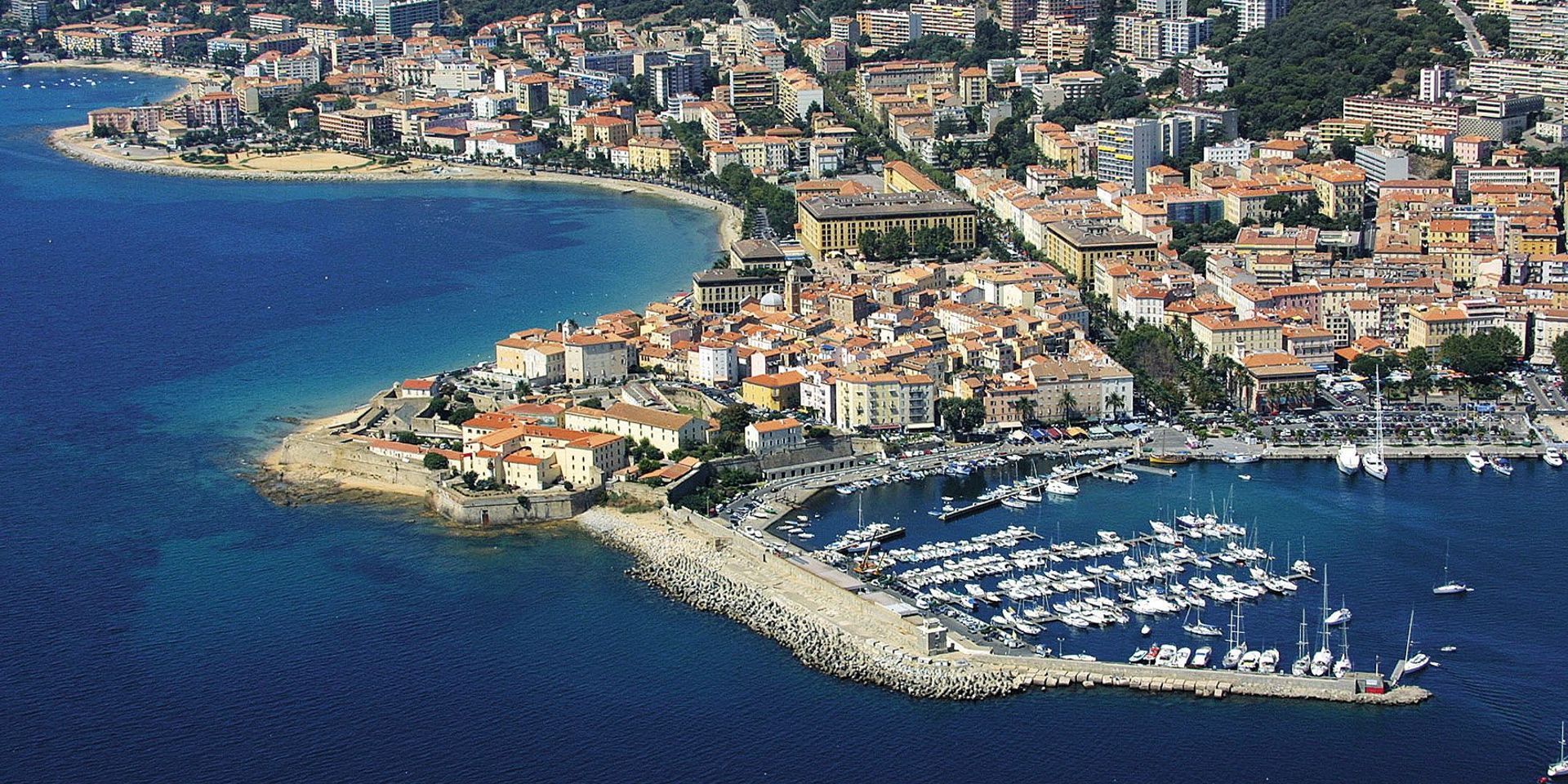
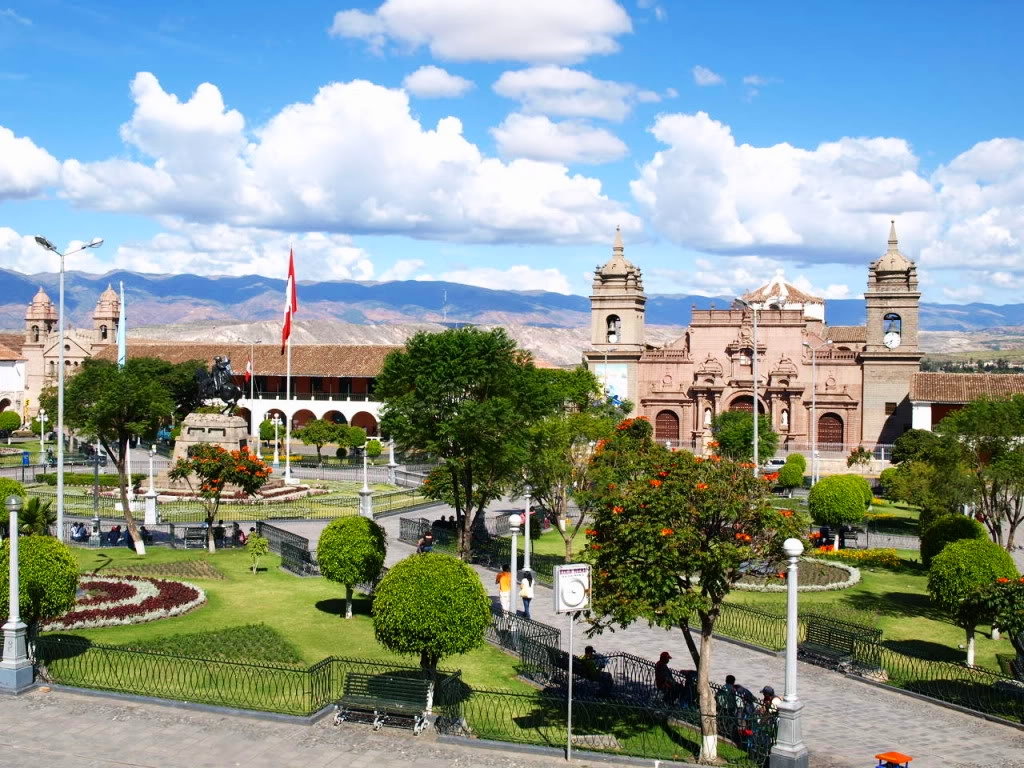

Edmonton [ˈedməntən] ist die Hauptstadt der kanadischen Provinz Alberta. Sie hat 932.546 Einwohner, hingegen hat die Metropolregion (CMA) 1.411.945 Einwohner (2017).[2] Damit ist Edmonton nach Calgary die zweitgrößte Stadt der Provinz und die fünftgrößte in Kanada. Mit 683 km² Gesamtfläche ist sie eine der flächengrößten Städte Nordamerikas, hat damit aber auch eine der niedrigsten Bevölkerungsdichten.
Indianische Siedlungen reichen mindestens 11.000 Jahre zurück, doch führt sich die Stadt auf ein Fort, das 1795 errichtet wurde, zurück. 1905 wurde Edmonton Hauptstadt der Provinz, die etwa bis zum Zweiten Weltkrieg stark von der Landwirtschaft abhing. Kriegsproduktion und Bodenschätze brachten der Stadt trotz des unwirtlichen Klimas einen lange anhaltenden industriellen Boom. Den bedeutendsten Wirtschaftszweig stellen heute die Dienstleistungsgewerbe dar, deren größter Arbeitgeber neben der Regierung die University of Alberta ist.
埃德蒙顿(英语:Edmonton,香港作爱民顿,台湾作艾德蒙顿,台山话作点问顿)是加拿大阿尔伯塔省的首府,该省的第二大城市(仅次于卡尔加里),城市人口为 899,447人(2016年数据),而大埃德蒙顿地区(CMA)人口为1,363,300(2015年数据)。埃德蒙顿是加拿大人口第二多的省会城市(排在多伦多之后)。埃德蒙顿是阿尔伯塔省的文化、政府和教育中心,城市拥有轻轨运输,一年有许多节日,大多集中在夏季,并有北美最大的室内购物中心——西部埃德蒙顿购物中心和加拿大最大的历史公园——埃德蒙顿炮台公园(Fort Edmonton Park)。2004年,埃德蒙顿庆祝其建市100周年(1904年)。
エドモントン(英: Edmonton[2])は、カナダのアルバータ州にある都市。同州の州都であり、州内ではカルガリーに次ぐ第2の都市である(国内5位)。また、カナダの州都としてはトロントに次ぐ第2位の人口規模を持つ。肥沃な農業地帯が広がるプレーリーに位置し、ノースサスカチュワン川が周辺地域の中心を流れている。
市内人口はおよそ81万人、広域圏人口はおよそ116万人で、北米の100万人都市としては最北端に位置する。州北部で盛んなオイルサンド産業と、ノースウエスト準州で運営されている大規模なダイヤモンド鉱への玄関口となっている。文化や行政、教育が盛んな地域でもある。「ザ・フェスティバル・シティ」[3]と呼ばれるほど年間を通してイベント行事が開催され、市内には北米最大のショッピングモール「ウェスト・エドモントン・モール」と最大の歴史公園「フォート・エドモントン(Fort Edmonton)」がある。
Edmonton (/ˈɛdməntən/ (![]() listen); Cree: ᐊᒥᐢᑲᐧᒋᐊᐧᐢᑲᐦᐃᑲᐣ;[13] Blackfoot: Omahkoyis[14]) is the capital city of the Canadian province of Alberta. Edmonton is on the North Saskatchewan River and is the centre of the Edmonton Metropolitan Region, which is surrounded by Alberta's central region. The city anchors the north end of what Statistics Canada defines as the "Calgary–Edmonton Corridor".[15]
listen); Cree: ᐊᒥᐢᑲᐧᒋᐊᐧᐢᑲᐦᐃᑲᐣ;[13] Blackfoot: Omahkoyis[14]) is the capital city of the Canadian province of Alberta. Edmonton is on the North Saskatchewan River and is the centre of the Edmonton Metropolitan Region, which is surrounded by Alberta's central region. The city anchors the north end of what Statistics Canada defines as the "Calgary–Edmonton Corridor".[15]
The city had a population of 932,546 in 2016, making it Alberta's second-largest city and Canada's fifth-largest municipality.[5] Also in 2016, Edmonton had a metropolitan population of 1,321,426, making it the sixth-largest census metropolitan area (CMA) in Canada.[7] Edmonton is North America's northernmost metropolitan area with a population over one million. A resident of Edmonton is known as an Edmontonian.[16]
Edmonton's historic growth has been facilitated through the absorption of five adjacent urban municipalities (Strathcona, North Edmonton, West Edmonton, Beverly and Jasper Place)[17] in addition to a series of annexations through 1982,[18] and the annexation of 8,260 ha (82.6 km2) of land from Leduc County and the city of Beaumont on January 1, 2019.[8] Known as the "Gateway to the North",[19] the city is a staging point for large-scale oil sands projects occurring in northern Alberta and large-scale diamond mining operations in the Northwest Territories.[20]
Edmonton is a cultural, governmental and educational centre. It hosts a year-round slate of festivals, reflected in the nickname "Canada's Festival City".[1] It is home to North America's largest mall, West Edmonton Mall (the world's largest mall from 1981 until 2004),[21] and Fort Edmonton Park, Canada's largest living history museum.[22]
Edmonton (![]() /ˈɛdməntən/ (?·i)) es la capital de la provincia canadiense de Alberta, así como sede de sus poderes y su administración. Está ubicada en la parte central de la provincia, una de las zonas más fértiles de las llanuras canadienses, en torno al río Saskatchewan Norte. 812 201 personas viven en Edmonton,1 lo que la convierte en la segunda ciudad más populosa de la provincia, detrás de Calgary, la segunda capital de provincia con más habitantes tras Toronto y la quinta de Canadá. Además, su área metropolitana es la sexta más poblada del país, con una población de 1 034 945 habitantes.2
/ˈɛdməntən/ (?·i)) es la capital de la provincia canadiense de Alberta, así como sede de sus poderes y su administración. Está ubicada en la parte central de la provincia, una de las zonas más fértiles de las llanuras canadienses, en torno al río Saskatchewan Norte. 812 201 personas viven en Edmonton,1 lo que la convierte en la segunda ciudad más populosa de la provincia, detrás de Calgary, la segunda capital de provincia con más habitantes tras Toronto y la quinta de Canadá. Además, su área metropolitana es la sexta más poblada del país, con una población de 1 034 945 habitantes.2
La ciudad abarca 683 km², una superficie mayor que la de Chicago, Filadelfia, Toronto o Montreal. Sin embargo, tiene una de las densidades de población más bajas de América del Norte, alrededor del 9,4 % de la de Nueva York. El residente de Edmonton es conocido como edmontoniano.
Edmonton sirve como enlace a la zona norte del «Corredor Calgary-Edmonton», una de las cuatro regiones que en conjunto comprenden el 50 % de la población de Canadá. Desde ella se organizan proyectos a gran escala de arenas de alquitrán que se desarrollan en el norte de Alberta, así como para proyectos de minería de diamantes en los Territorios del Noroeste.
Es el centro cultural, gubernamental y educativo de Alberta. Es sede de varios festivales de talla mundial, lo que le ha valido para ganarse el título de «La ciudad festival» (The Festival City).3 En Edmonton está el centro comercial más grande de Norteamérica, el West Edmonton Mall (que fue el más grande del mundo desde 1981 hasta 2004), y el museo de historia viva más grande de Canadá, el Fort Edmonton Park. En 2004, la ciudad celebró el centenario de su fundación como ciudad.
Edmonton è il capoluogo della provincia canadese dell'Alberta. Si trova nella parte centro settentrionale della provincia, un'area che conta alcune delle più fertili terre agricole delle praterie canadesi. Dopo Calgary, è la seconda città dell'Alberta, con 932.546 abitanti. La sua area metropolitana, con una popolazione stimata nel 2016 in 1.392.600 abitanti,[2] è la quinta del Canada. Tra le città delle Americhe con più di un milione di abitanti è quella situata più a nord.
Edmonton (![]() /ˈɛdməntən/ (?·i)) es la capital de la provincia canadiense de Alberta, así como sede de sus poderes y su administración. Está ubicada en la parte central de la provincia, una de las zonas más fértiles de las llanuras canadienses, en torno al río Saskatchewan Norte. 812 201 personas viven en Edmonton,1 lo que la convierte en la segunda ciudad más populosa de la provincia, detrás de Calgary, la segunda capital de provincia con más habitantes tras Toronto y la quinta de Canadá. Además, su área metropolitana es la sexta más poblada del país, con una población de 1 034 945 habitantes.2
/ˈɛdməntən/ (?·i)) es la capital de la provincia canadiense de Alberta, así como sede de sus poderes y su administración. Está ubicada en la parte central de la provincia, una de las zonas más fértiles de las llanuras canadienses, en torno al río Saskatchewan Norte. 812 201 personas viven en Edmonton,1 lo que la convierte en la segunda ciudad más populosa de la provincia, detrás de Calgary, la segunda capital de provincia con más habitantes tras Toronto y la quinta de Canadá. Además, su área metropolitana es la sexta más poblada del país, con una población de 1 034 945 habitantes.2
La ciudad abarca 683 km², una superficie mayor que la de Chicago, Filadelfia, Toronto o Montreal. Sin embargo, tiene una de las densidades de población más bajas de América del Norte, alrededor del 9,4 % de la de Nueva York. El residente de Edmonton es conocido como edmontoniano.
Edmonton sirve como enlace a la zona norte del «Corredor Calgary-Edmonton», una de las cuatro regiones que en conjunto comprenden el 50 % de la población de Canadá. Desde ella se organizan proyectos a gran escala de arenas de alquitrán que se desarrollan en el norte de Alberta, así como para proyectos de minería de diamantes en los Territorios del Noroeste.
Es el centro cultural, gubernamental y educativo de Alberta. Es sede de varios festivales de talla mundial, lo que le ha valido para ganarse el título de «La ciudad festival» (The Festival City).3 En Edmonton está el centro comercial más grande de Norteamérica, el West Edmonton Mall (que fue el más grande del mundo desde 1981 hasta 2004), y el museo de historia viva más grande de Canadá, el Fort Edmonton Park. En 2004, la ciudad celebró el centenario de su fundación como ciudad.
Эдмонтон (англ. Edmonton [ˈɛdməntən]) — административный центр канадской провинции Альберта.

Edirne, früher Adrianopel (bulgarisch Одрин Odrin, neugriechisch Αδριανούπολις Adrianoúpolis), ist mit knapp 170.000 Einwohnern die westlichste Großstadt der Türkei. Sie liegt im bulgarisch-griechisch-türkischen Dreiländereck, in Ostthrakien, dem europäischen Teil der Türkei. Gleichzeitig ist sie auch Zentrum des zentralen Landkreises (Merkez). Die ehemalige Hauptstadt des Osmanischen Reiches ist heute das Verwaltungszentrum der gleichnamigen Provinz. Sie trug in ihrer Geschichte die Namen Odrysai (thrakisch), Orestia (altgriechisch) und Hadrianopolis (lateinisch, Stadt des Hadrian).
In Edirne schlossen die Sultane des Osmanischen Reiches dreimal einen Frieden, 1568 mit dem Heiligen Römischen Reich sowie 1713 und 1829 mit dem Russischen Kaiserreich.
埃迪尔内(土耳其语:Edirne;美国 /eɪˈdɪərnə, ɛˈ-/;土耳其语:[eˈdiɾne]),或称哈德良堡或阿德里安堡(拉丁语:Hadrianopolis,英语:Adrianople;/ˌeɪdriəˈnoʊpəl/),因罗马皇帝哈德良所建而得名。土耳其语埃迪尔内是希腊语阿德里安堡的音译,故两种称呼并不是两个不同的名字。该城是土耳其埃迪尔内省省会,位于邻近希腊和保加利亚的边境


宗教建筑公元742年,埃尔富特设为主教区,人们就把这一年作为建城之始。中世纪时,这里是宗教堡垒,先后修筑了80多座教堂和36座修道院,虽经几 百年风雨沧桑,今天仍保留下二三十座宗教建筑。1392年,埃尔富特办起一所大学(1816年解散,1992年重建)。宗教改革家马丁·路德曾在这里完成 学业,随后又在城北的奥古斯丁修道院度过6年光阴,这座修道院至今仍在。埃尔富特也是一些重大历史事件的目睹者,拿破仑曾在这里会见沙皇亚历山大一世,并 接见了大文豪歌德。1891年,社会民主党在这里召开代表大会,通过了《埃尔富特纳领》。 菘蓝花城古时,埃尔富特周围大量种植菘蓝,从中可以提取蓝色染料。通过经营这种植物,埃尔富特发展成一大贸易都市和德国有数的富裕大城。今日繁华的安格尔 大街 (Anger)就是当年的菘蓝贸易市场。从许多临街楼屋正面墙上那豪华的装饰可以看出这座古城当年的富足。然而,自从地理大发现以来,海外价格便宜的靛蓝 占领了市场,这里的菘蓝贸易日趋萧条,以致消失。18世纪起,人们开始转而发展花卉种植业,用科学方法培育花籽。埃尔富特遂成为园艺中心,向各国大量出口 鲜花和花籽。现在这里每年举行国际园艺展。场址在市南,占地广达100公顷。那里的花田常年色彩纷呈,灿烂如锦,附近还设有园艺博物馆。 中世纪教堂埃尔富特拥有极为众多的中世纪教堂、修道院和富裕市民的华丽房屋(尤其是鲁市周围),而且保留得十分完整,真可谓是“建筑艺术的露天博物馆”。 最有艺术价值的是教堂山上的双教堂。其中大教堂(Dom)具有罗曼式和哥特式的混合风格。殿堂格局宏伟,高大空廓,层顶装饰有多座大小不等的尖塔,一排排 长玻璃窗上全是五彩的玻璃画。墙上还有各种精美生动的人物雕像,西北大门壁上耶稣12门徒的雕像,最为出色。后室的高墙上有一座铸于1497年的铜钟,重 12吨,是世界最大的铸钟之一。它的钟声洪亮,在20公里外的魏玛城都清晰可闻。大教堂西北,一巷之隔,矗有另一座教堂,名叫圣塞维利堂。它的外部建筑并 不显眼,但却外拙内秀,内部结构十分精美。壁上的人物雕像,神态俨然。堂内还有15世纪的豪华石棺。 商贬桥格拉河在埃尔富特市内分为几股,市区河道蜿蜒,水市楼台,富有水乡情调。市政厅附近的河上架着一座古桥,叫商贩桥(krumerbrucke),建 于14 世纪。桥上两侧,筑有32座三四层商的楼屋,构成一条风格独特的桥街。桥街上是一家家出售工艺品和古玩的店铺。这样的桥街在意大利的佛罗伦萨有一座,而在 德国却只此一处。因此,桥街和双教堂一样,成为埃尔富特的象征。
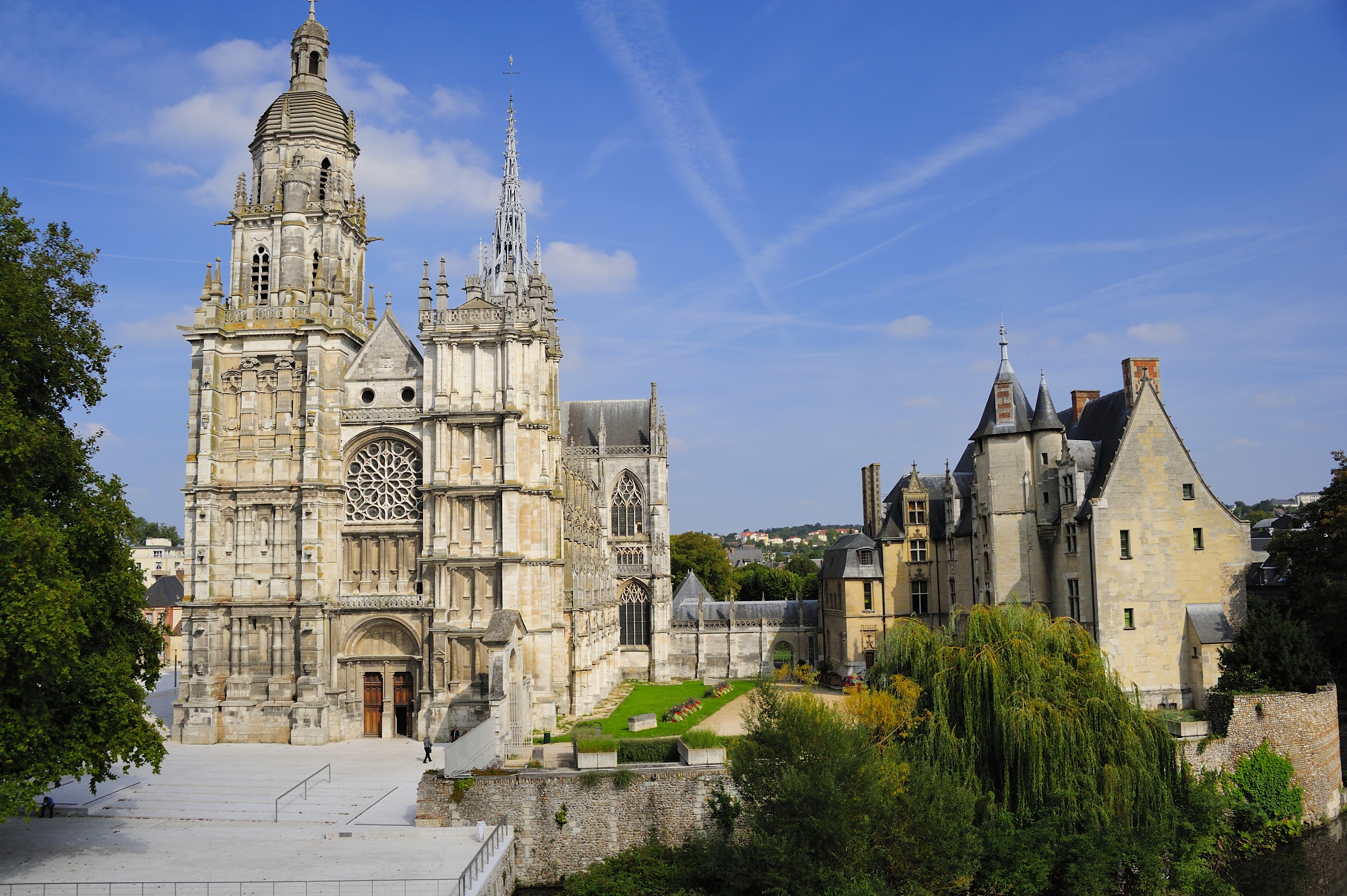
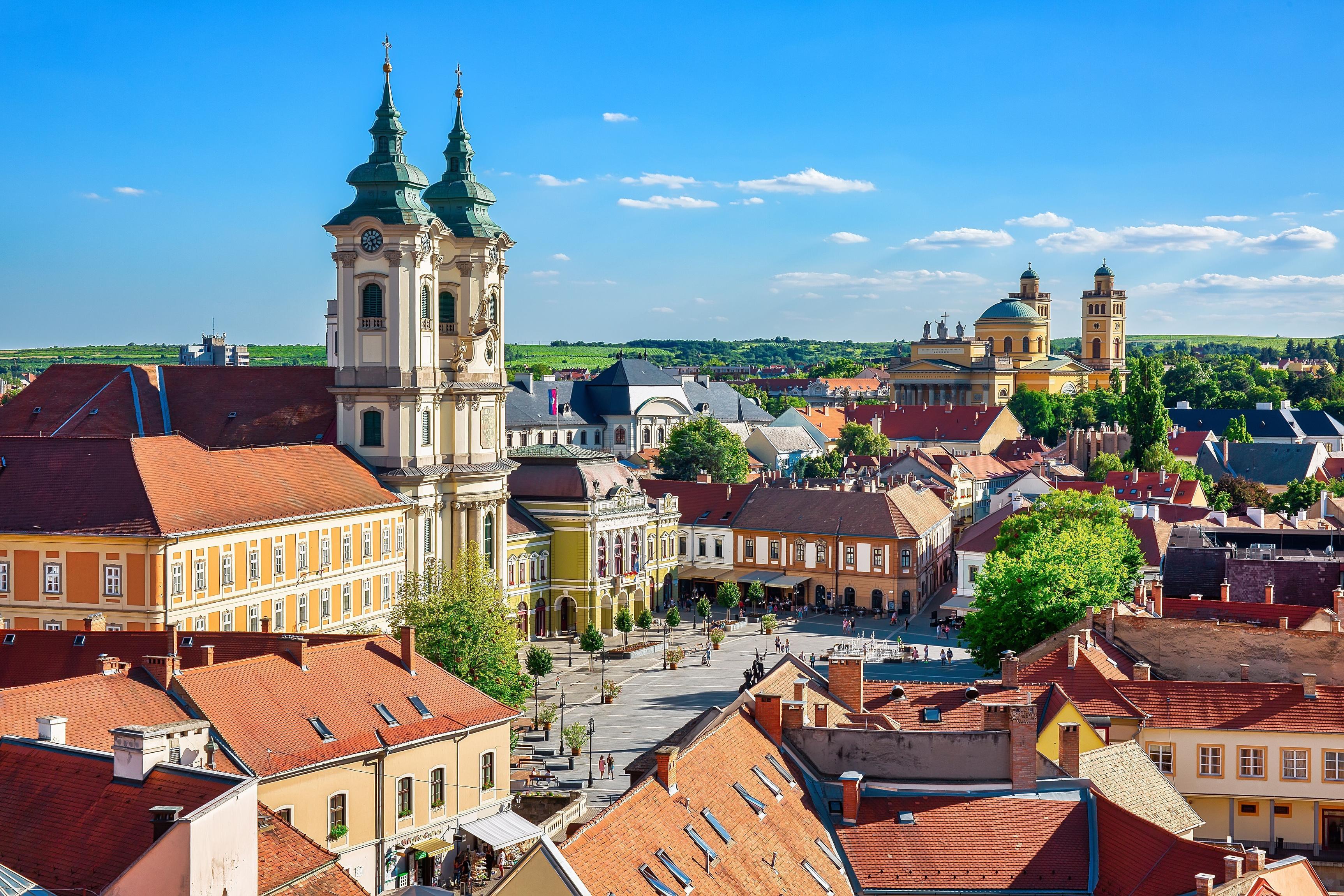


Exeter [ˈɛksɪtə] ist die Hauptstadt der Grafschaft Devon im Südwesten Englands und war früher die Hauptstadt von Cornwall. 2016 zählte die Stadt knapp unter 130.000 Einwohner.[1] Exeter liegt an einer Furt des Flusses Exe, einige Kilometer nördlich der Mündung in den Ärmelkanal. Der Wahlspruch der Stadt, Semper fidelis („für immer treu“),[2] wurde 1588 von Elisabeth I. vorgeschlagen.
埃克塞特(英语:Exeter,读音: /'eksɪtər/ 帮助·信息),英国英格兰西南区域德文郡郡治、城市。据2001年人口普查,埃克塞特的人口有111,076人。2010年则估计人口有119,600人[2]。埃克塞特的大教堂始建于12世纪初,并在16世纪宗教改革后是英国国教的教堂。埃克塞特的交通十分发达。埃克塞特是一个著名的旅游都市,然而这里的主要产业却不是旅游业。在罗马时期这里就有了都市。之后撒克逊人来到了这里。埃克塞特的都市规模仍在不断扩大。工业和服务业是这里的主要产业。埃克塞特市内有众多旅游景点及购物设施。市内有不少宗教建筑。埃克塞特的市政厅建于中世纪,号称是英格兰历史最长的市政厅,并且迄今都仍在使用。
/'eksɪtər/ 帮助·信息),英国英格兰西南区域德文郡郡治、城市。据2001年人口普查,埃克塞特的人口有111,076人。2010年则估计人口有119,600人[2]。埃克塞特的大教堂始建于12世纪初,并在16世纪宗教改革后是英国国教的教堂。埃克塞特的交通十分发达。埃克塞特是一个著名的旅游都市,然而这里的主要产业却不是旅游业。在罗马时期这里就有了都市。之后撒克逊人来到了这里。埃克塞特的都市规模仍在不断扩大。工业和服务业是这里的主要产业。埃克塞特市内有众多旅游景点及购物设施。市内有不少宗教建筑。埃克塞特的市政厅建于中世纪,号称是英格兰历史最长的市政厅,并且迄今都仍在使用。


Jerewan, auch Eriwan  anhören?/i – IPA: jɛɾɛˈvɑn, armenisch Երևան (amtlich, ostarmenisch) oder Երեւան (traditionell, westarmenisch) – ist die Hauptstadt und mit 1.201.322 Einwohnern (Stand 2009) die größte Stadt Armeniens. Jerewan, eine der ältesten Städte der Welt,[1] ist auch das wirtschaftliche, kulturelle und wissenschaftliche Zentrum des Landes und wegen der Größe der Stadt eine eigene Provinz.
anhören?/i – IPA: jɛɾɛˈvɑn, armenisch Երևան (amtlich, ostarmenisch) oder Երեւան (traditionell, westarmenisch) – ist die Hauptstadt und mit 1.201.322 Einwohnern (Stand 2009) die größte Stadt Armeniens. Jerewan, eine der ältesten Städte der Welt,[1] ist auch das wirtschaftliche, kulturelle und wissenschaftliche Zentrum des Landes und wegen der Größe der Stadt eine eigene Provinz.
埃里温(亚美尼亚语:Երևան;Yerevan)是西亚国家亚美尼亚共和国的首都。在西方有叶里万(Erivan)、叶烈布尼(Erebuni)、叶烈温(Ereun)、耶烈万等多种称呼。常见的名称表记有“Erewan”、“Ayrivan”、“Erevan”等。
埃里温人口约106万人(2004年统计)。主要产业为机械制造及金属工业、红葡萄酒及白兰地酿造、烟草制造等。赫拉兹丹河(Hrazdan River)流经市内,北望著名的亚拉拉特山。若以文献记载为准,该城是现存世界最古老的都市之一。
埃里温的兹瓦尔特诺茨国际机场是亚美尼亚共和国的主要机场。埃里温无轨电车系统于1949年开始运行,有轨电车则因为高昂的运营成本而被关闭。埃里温地铁共有一条线路,负责着全城的地铁交通。铁路方面,只有一条国际线路通往邻国格鲁吉亚的第比利斯,将亚美尼亚和伊朗直接连接的新铁路仍在建设中。当地的公共交通高度私有化,小巴的市场份额是最大的。
埃里温共有250余所学校,其中公立学校200余所,私有学校50所左右。此外,埃里温在苏维埃的统治下成为了科学研究的主要中心。医疗方面,埃里温的数家医院通过现代技术改善了自己并开始提供医疗保健和医学研究服务,利克沃尔(Liqvor)制药厂是亚美尼亚最大的药品生产商。能源方面,赫拉兹丹河附近建立了数座水力发电厂,当地还建有一些火力发电厂。互联网方面,亚美尼亚的3家移动电话服务商均位于埃尔温,许多中小企业也参与了互联网服务。
エレバン(Երևան、Yerevan [jɛɾɛˈvɑn] (![]() 音声ファイル))は、アルメニア共和国の首都である[1]。イェレヴァン、エリバン(Erivan)、エレブニ(Erebuni)、エレウン(Ereun)と呼ばれていたこともある。「Erewan」、「Ayrivan」、「Erevan」などの表記も見られる。ロシア語ではかつて"Эривань"(エリヴァニ)と表記されていたが、1930年代頃から原音に近い"Ереван"(イェレヴァン)と綴られるようになった[2]。
音声ファイル))は、アルメニア共和国の首都である[1]。イェレヴァン、エリバン(Erivan)、エレブニ(Erebuni)、エレウン(Ereun)と呼ばれていたこともある。「Erewan」、「Ayrivan」、「Erevan」などの表記も見られる。ロシア語ではかつて"Эривань"(エリヴァニ)と表記されていたが、1930年代頃から原音に近い"Ереван"(イェレヴァン)と綴られるようになった[2]。
人口約106万人(2004年)。機械製造や金属業、ワイン、ブランデー製造、たばこ製造業が盛ん。フラズダン川が市内を流れる。南にアララト山を臨む。現存する世界最古の都市の一つとされており、また創世記に語られている「エデンの園」が存在していたという伝承のある地でもある。
Yerevan (/ˌjɛrəˈvɑːn/, YE-rə-VAHN; Armenian: Երևան[a] [jɛɾɛˈvɑn] ( listen), sometimes spelled Erevan)[b] is the capital and largest city of Armenia as well as one of the world's oldest continuously inhabited cities.[15] Situated along the Hrazdan River, Yerevan is the administrative, cultural, and industrial center of the country. It has been the capital since 1918, the thirteenth in the history of Armenia, and the seventh located in or around the Ararat plain. The city also serves as the seat of the Araratian Pontifical Diocese; the largest diocese of the Armenian Apostolic Church and one of the oldest dioceses in the world.[16]
listen), sometimes spelled Erevan)[b] is the capital and largest city of Armenia as well as one of the world's oldest continuously inhabited cities.[15] Situated along the Hrazdan River, Yerevan is the administrative, cultural, and industrial center of the country. It has been the capital since 1918, the thirteenth in the history of Armenia, and the seventh located in or around the Ararat plain. The city also serves as the seat of the Araratian Pontifical Diocese; the largest diocese of the Armenian Apostolic Church and one of the oldest dioceses in the world.[16]
The history of Yerevan dates back to the 8th century BC, with the founding of the fortress of Erebuni in 782 BC by king Argishti I at the western extreme of the Ararat plain.[17] Erebuni was "designed as a great administrative and religious centre, a fully royal capital."[18] By the late ancient Armenian Kingdom, new capital cities were established and Yerevan declined in importance. Under Iranian and Russian rule, it was the center of the Erivan Khanate from 1736 to 1828 and the Erivan Governorate from 1850 to 1917, respectively. After World War I, Yerevan became the capital of the First Republic of Armenia as thousands of survivors of the Armenian Genocide in the Ottoman Empire arrived in the area.[19] The city expanded rapidly during the 20th century as Armenia became part of the Soviet Union. In a few decades, Yerevan was transformed from a provincial town within the Russian Empire to Armenia's principal cultural, artistic, and industrial center, as well as becoming the seat of national government.
With the growth of the Armenian economy, Yerevan has undergone major transformation. Much construction has been done throughout the city since the early 2000s, and retail outlets such as restaurants, shops, and street cafés, which were rare during Soviet times, have multiplied. As of 2011, the population of Yerevan was 1,060,138, just over 35% of the Republic of Armenia's total population. According to the official estimate of 2016, the current population of the city is 1,073,700.[20] Yerevan was named the 2012 World Book Capital by UNESCO.[21] Yerevan is an associate member of Eurocities.[22]
Of the notable landmarks of Yerevan, Erebuni Fortress is considered to be the birthplace of the city, the Katoghike Tsiranavor church is the oldest surviving church of Yerevan and Saint Gregory Cathedral is the largest Armenian cathedral in the world, Tsitsernakaberd is the official memorial to the victims of the Armenian Genocide, and several opera houses, theatres, museums, libraries, and other cultural institutions. Yerevan Opera Theatre is the main spectacle hall of the Armenian capital, the National Gallery of Armenia is the largest art museum in the Republic of Armenia and shares a building with the History Museum of Armenia, and the Matenadaran repository contains one of the largest depositories of ancient books and manuscripts in the world.
Erevan4 ou Yerevan5 (en arménien : Երևան, Yerevan) est la plus grande des villes d’Arménie et sa capitale6 depuis 19187, la douzième8 depuis les origines de l’Arménie. La ville actuelle est en partie fondée sur l'ancienne cité urartéenne d'Erebouni. Elle est située à l'ouest du pays, à l'extrémité orientale de la plaine de l'Ararat, au-dessus des gorges de la rivière Hrazdan.
Elle connaît une histoire mouvementée faite de batailles, de pillages, d'incendies et de séismes pendant plus de 2 500 ans, devient la capitale de l'éphémère première République d'Arménie après la Première Guerre mondiale et recueille une partie des rescapés du génocide arménien. La ville s'étend rapidement au XXe siècle lorsque l'Arménie devient une des quinze républiques de l'URSS. D'une petite bourgade de quelques milliers d'habitants sous la première République, elle devient en moins de cinquante ans le principal centre culturel, artistique et industriel du pays, ainsi que le siège de ses institutions politiques.
En 2007, la population d’Erevan est estimée à 1 107 800 habitants9 et son agglomération très peu étendue autour de la ville regroupe avec ses 1 245 700 habitants (estimation officielle actuelle10), plus de 42 % de la population arménienne. Ses habitants sont appelés les Erevanais et les Erevanaises2.
Erevan a été nommé capitale mondiale du livre 2012 par l'UNESCO. Erevan est membre associé de Eurocities.
Erevan[1] (in armeno: Երևան?, [jɛɾɛˈvɑn][?·info], anche scritta Yerevan[2] e Jerevan) è la capitale e la più popolosa città dell'Armenia (1 201 539 abitanti nel 1989; circa 1 127 300 nel 2012).[3] La città, fino al 2008 equiparata ad una provincia (marz), è ora un comune con un consiglio comunale elettivo che nomina il sindaco[4].
Ereván1 (en armenio: Երևան /jɛɾɛˈvɑn/ o Երեւան /jɛɾɛˈvɑn/; en ruso: Ереван, tr.: Yereván) es la capital de Armenia,2 así como la mayor ciudad del país. Su superficie es de 227 km², siendo una división administrativa especial, diferente a los marzes (մարզեր) en que se divide el país.3 Se trata de una ciudad fundada en el año 782 a.C. al oeste de lo que hoy es Armenia, en el extremo oriental de la llanura del monte Ararat y a la orilla del río Hrazdan. Después de la Primera Guerra Mundial se convirtió en la capital de la República Democrática de Armenia y aumentó su población con la llegada de miles de supervivientes del genocidio armenio, expandiéndose aún más en el siglo XX al convertirse en capital de una de las quince Repúblicas de la URSS, la RSS de Armenia. De esta manera, la pequeña ciudad se transformó en una de las más importantes de la región, sede de las más importantes asociaciones culturales, artísticas e industriales del país, además de las políticas, y base de una extensa red de vías férreas, así como el nudo de comercio de productos agrícolas.
En 2003, la población de la ciudad se estimaba en 1.091.235 habitantes,45 para un total de 1.245.700 habitantes añadiendo las poblaciones aledañas;46 conformando el 42% de la población armenia, seguida por Gyumri, con una población de 150.917 habitantes.4
La historia de Ereván se remonta al siglo VIII a. C. , con la fundación de la fortaleza urartiana de Erebuni en el año siglo VIII a. C..7 Progresivamente, el nombre Erebuni evolucionó en el idioma armenio entre el s. V o el siglo IV a. C., modificando la letra "b" en el nombre, hasta convertirse en "v".8
Cuenta con universidad propia, Academia de Ciencias, la Galería Nacional de Armenia, el Museo de Historia de Armenia y diversas bibliotecas públicas. En la ciudad existen las ruinas de una fortaleza urartiana de unos 3000 años de antigüedad. Entre los edificios importantes destacan la Catedral, el Mercado y la Ópera. Su aeropuerto está situado en Zvartnots.
Ereván fue la Capital Mundial del Libro del 2012, declarada por la UNESCO.
Ерева́н (арм. Երևան, МФА (арм.): [jɛɾɛˈvɑn]) — столица и крупнейший по численности населения и площади город Армении, один из древнейших городов мира. В русской транскрипции до 1936 года известен как Эривань. Расположен на левобережной (по реке Аракс) части Араратской долины. Население составляет 1075,1 тыс. человек (на 1 июля 2017 года)[4]. Площадь города — 223 км². Ереван — политический, экономический, культурный и научный центр, а также важнейший транспортный узел страны. Город обслуживают два аэропорта, метрополитен, железнодорожный вокзал.
Высота над уровнем моря — от 900 до 1300 м, часть города расположена на вулканическом плато к северу от Араратской долины.
За годы советской власти облик Еревана полностью изменился в результате огромных градостроительных работ (первый генеральный план 1924, архитектор А. И. Таманян; также — 1970, архитекторы М. Д. Мазманян, Э. А. Папян и др.); своеобразный колорит городу придал широко используемый в строительстве местный камень различных оттенков (розовый, кремовый, белый туф)[8].
 Germany
Germany

 International cities
International cities
 *European Capital of Culture
*European Capital of Culture

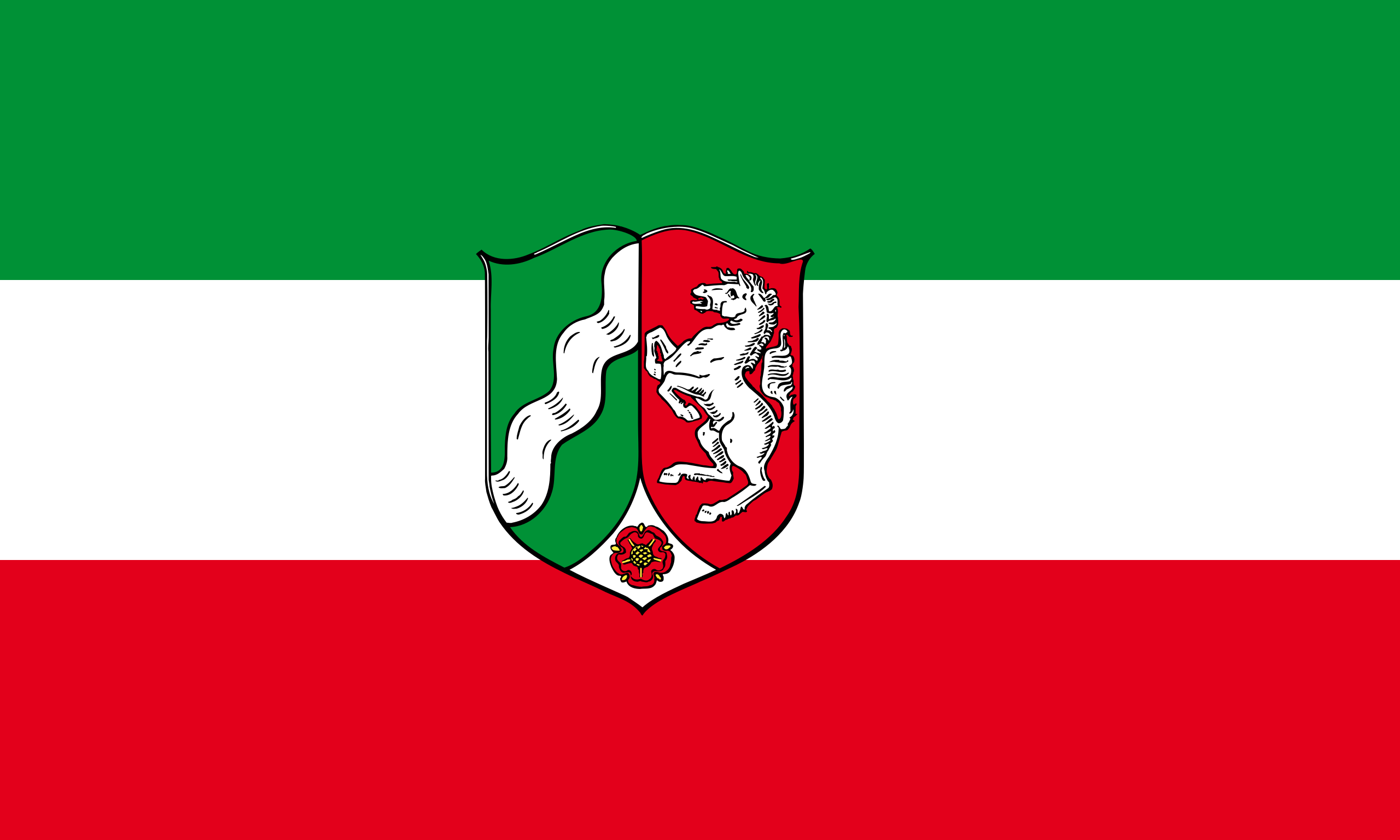 North Rhine-Westphalia
North Rhine-Westphalia
 Umwelthauptstadt Europas
Umwelthauptstadt Europas

Essen ist eine Großstadt im Zentrum des Ruhrgebiets und der Metropolregion Rhein-Ruhr. Sie ist nach Köln, Düsseldorf und Dortmund die viertgrößte Stadt des Landes Nordrhein-Westfalen und eines der Oberzentren. Mit 589.145 Einwohnern (31. Dezember 2016)[2] steht die kreisfreie Stadt im Regierungsbezirk Düsseldorf auf der Liste der Großstädte in Deutschland an neunter Stelle. Essen ist als bedeutender Industriestandort Sitz bekannter Großunternehmen und mit der 1972 gegründeten Universität-Gesamthochschule, die 2003 mit der Universität am Nachbarstandort in Duisburg zur Universität Duisburg-Essen fusionierte, auch Hochschulstandort. Im Jahre 1958 wurde die Stadt Sitz des neugegründeten Bistums Essen.
Die auf das 845 gegründete Frauenstift Essen zurückgehende Stadt an der Ruhr ist Mitglied im Landschaftsverband Rheinland und im Regionalverband Ruhr. Im Rahmen des Projekts RUHR.2010 – Kulturhauptstadt Europas war Essen im Jahr 2010 stellvertretend für das gesamte Ruhrgebiet Kulturhauptstadt Europas.
Neben dem Stift Essen war das von Liudger um 800 gegründete Kloster Werden ein Zentrum der spätantik-frühchristlichen Textüberlieferung. Im 14. Jahrhundert von Kaiser Karl IV. zur freien Reichsstadt erhoben, war Essen seit dem Spätmittelalter Waffenschmiede und stieg mit der Industrialisierung zu einem der wichtigsten Zentren der Montanindustrie in Deutschland (mit eigener Kuxbörse) auf. Nach massivem Rückgang der Schwerindustrie ab Mitte der 1960er Jahre hat Essen im Zuge des Strukturwandels einen starken Dienstleistungssektor entwickelt. Heute erinnern das Essener Münster und die älteste erhaltene vollplastische Marienfigur des christlichen Abendlandes (Goldene Madonna) an die mittelalterliche Geschichte der Stadt. Gleichzeitig zeugen Monumente der Industriekultur von ihrer schwerindustriellen Vergangenheit, besonders das UNESCO-Weltkulturerbe Zeche Zollverein. Das Stadtbild ist auch durch markante Hochhäuser geprägt.
Mit dem Museum Folkwang verfügt Essen über eine renommierte Sammlung moderner Gemälde und Fotografien. Das nach Plänen von Alvar Aalto erbaute Opernhaus, die Folkwang Universität der Künste, das Grillo-Theater oder das Deutsche Plakatmuseum sind angesehene Kunst- und Kultureinrichtungen.
Nachdem Essen 2010 Kulturhauptstadt Europas war, erhielt sie für das Jahr 2017 den Titel Grüne Hauptstadt Europas.
埃森(Essen)是德国北莱茵-威斯特法伦州里鲁尔区的一个非县辖城市,是杜塞尔多夫行政区的联邦州总中心之一。它是德国的一座大城市,大概有59万人口。该市还是莱茵兰风景区联盟和鲁尔区区域联盟成员。 埃森(Essen),公元897年时,称为Astnide。之后名称的演变过程是Astnidum→Astanidum→Asbidi→Asnid→Assinde→Asnida→Assindia→Essendia→Esnede→Essende→Essend→Essen。推测最初可能是“被火烧掉的林地”的意思。
埃森最著名的企业为蒂森克虏伯公司,其中一总部是设于埃森。而埃森第二大企业则为莱茵集团,是电力公司。 其他总部设于埃森的,还包括工程公司豪赫蒂夫、零售集团Aldi、化工公司伊诺力克,以及可口可乐。
 History
History
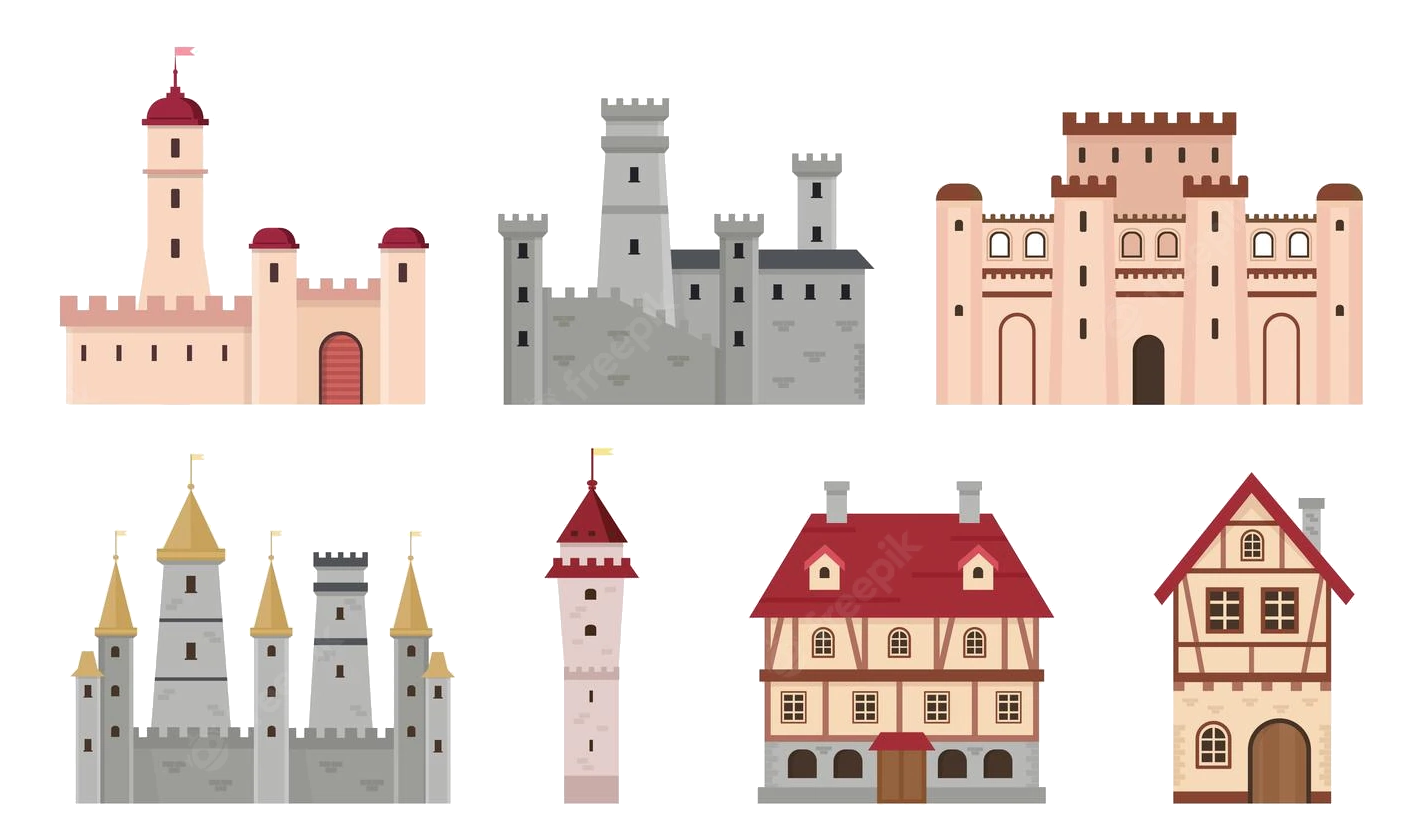 Medieval cities in Europe
Medieval cities in Europe
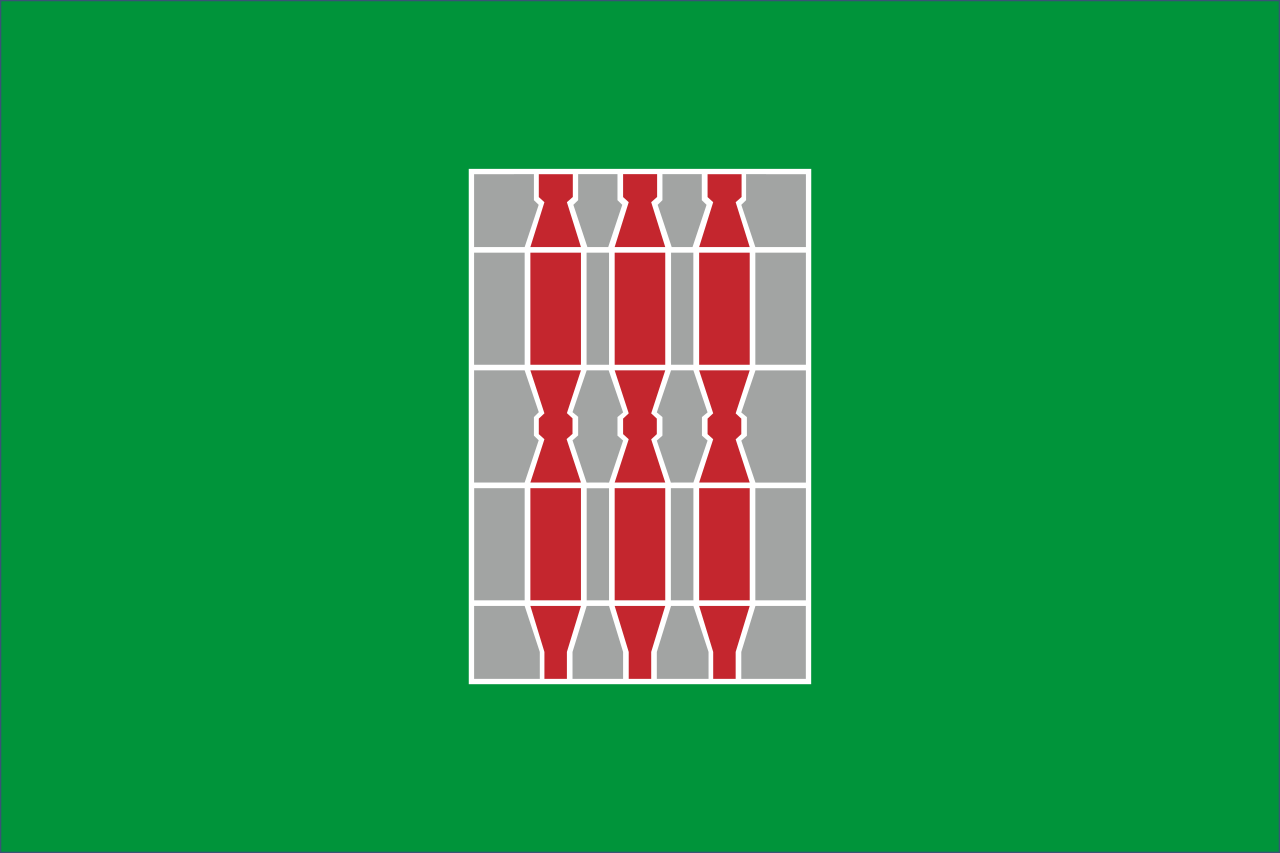 Umbria
Umbria
 World Heritage
World Heritage
 Corse
Corse
 Sport
Sport
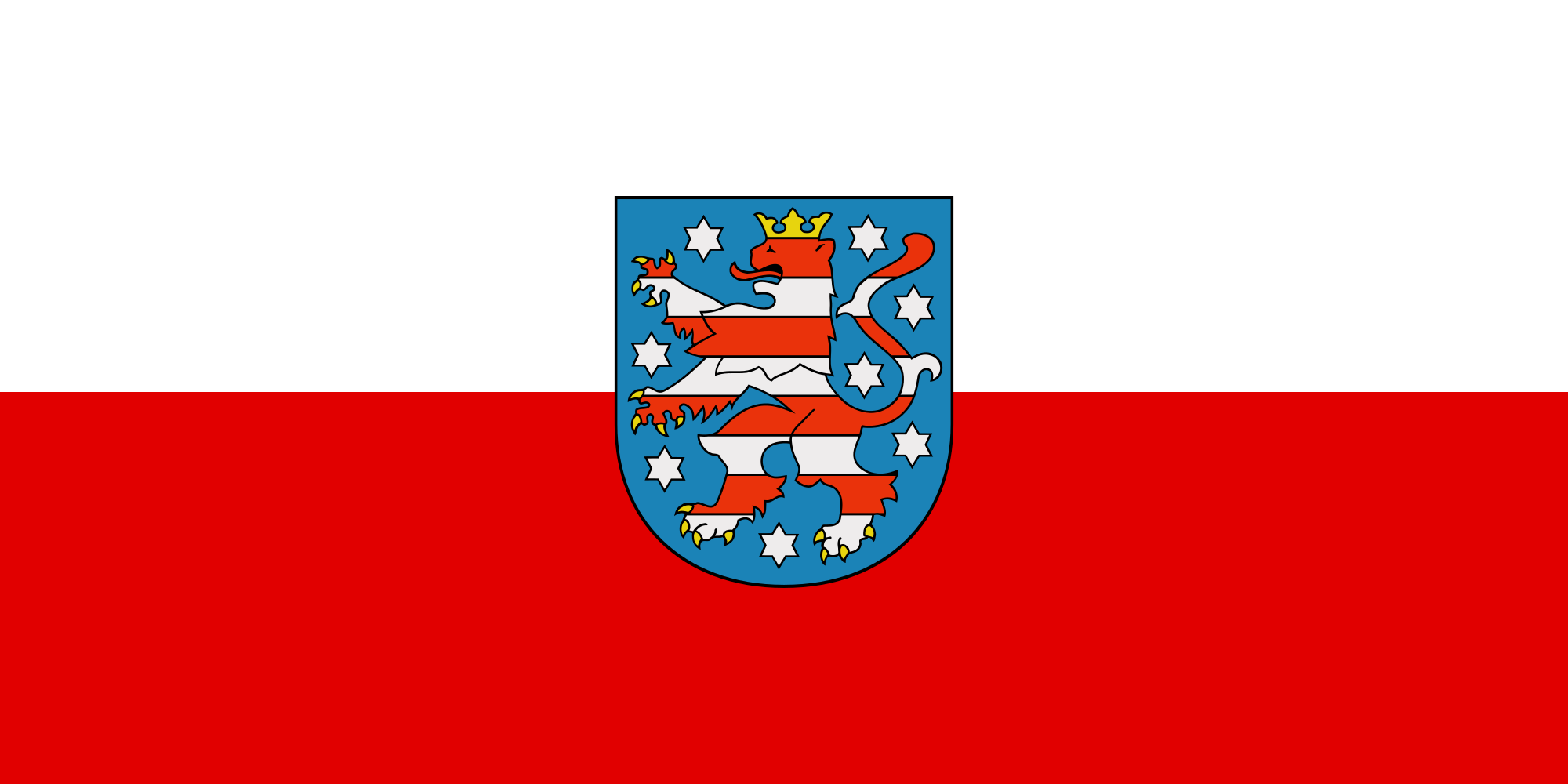 Thuringia
Thuringia
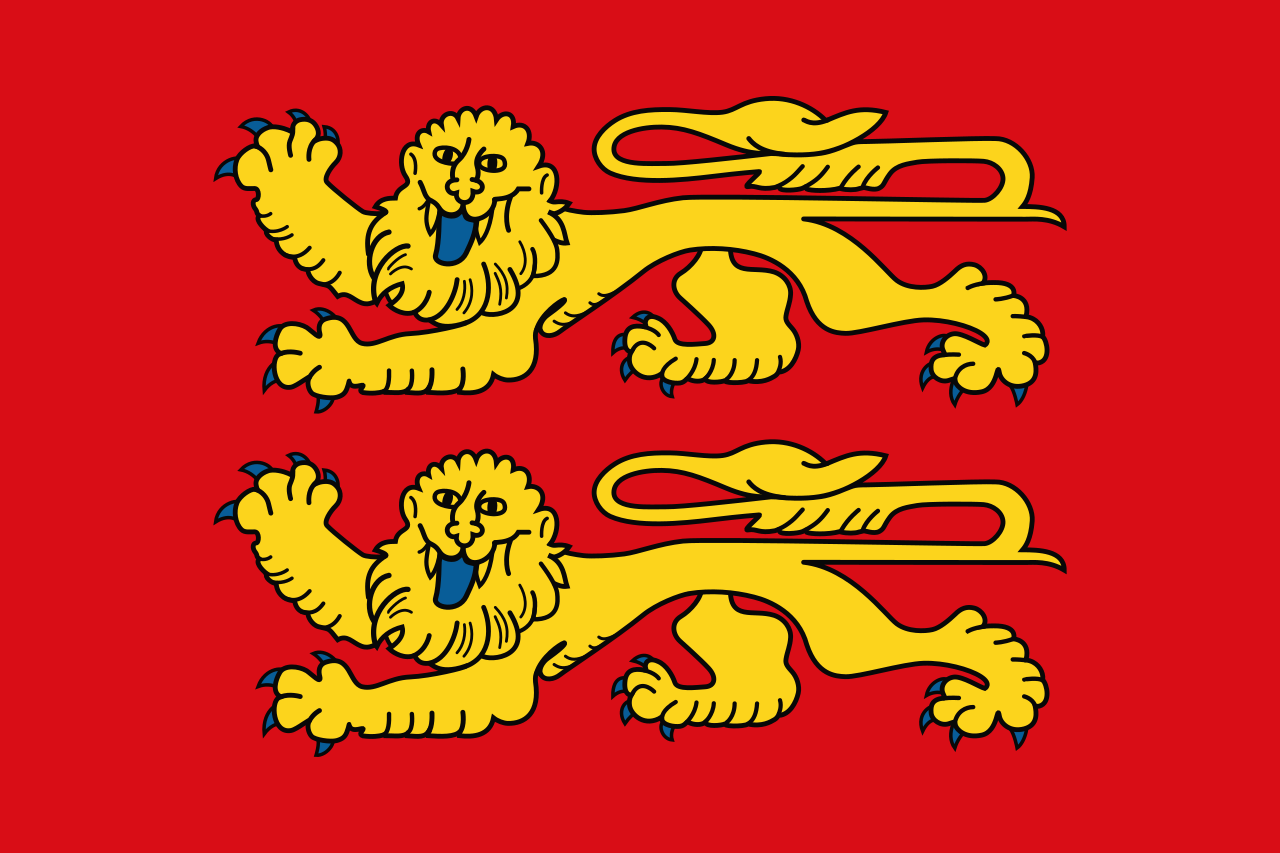 Normandie
Normandie
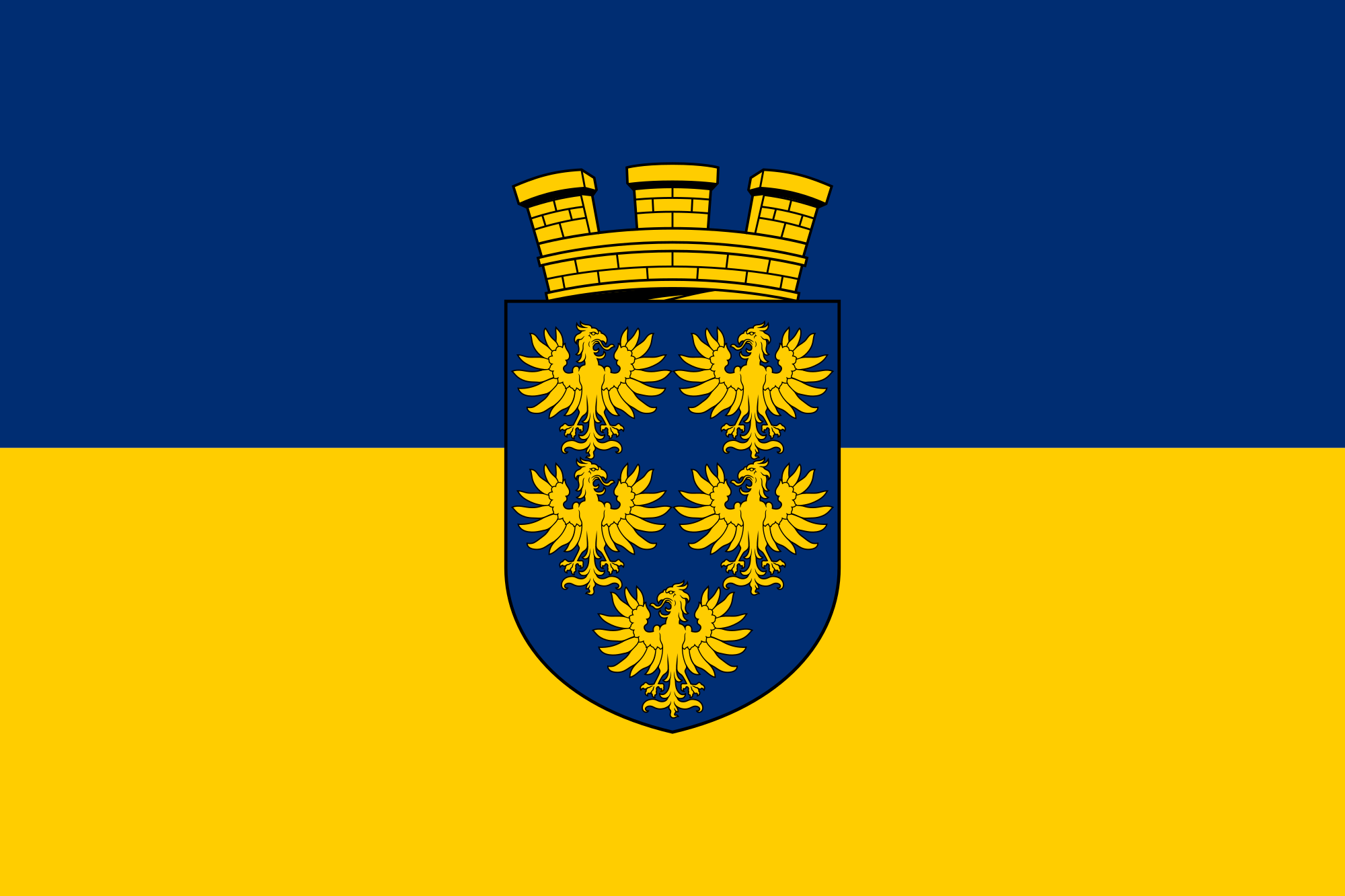 Lower Austria
Lower Austria
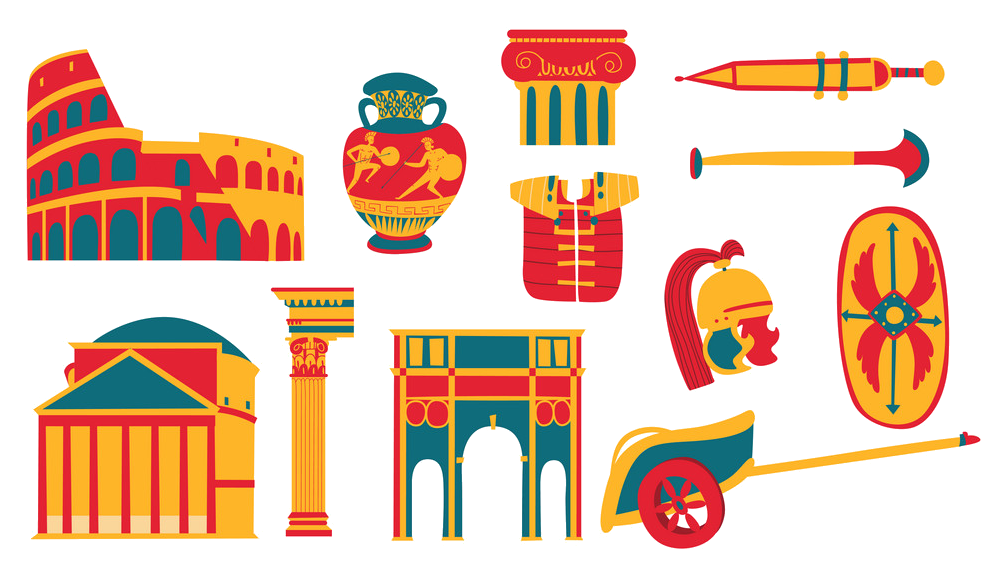 Cities founded by the Romans
Cities founded by the Romans